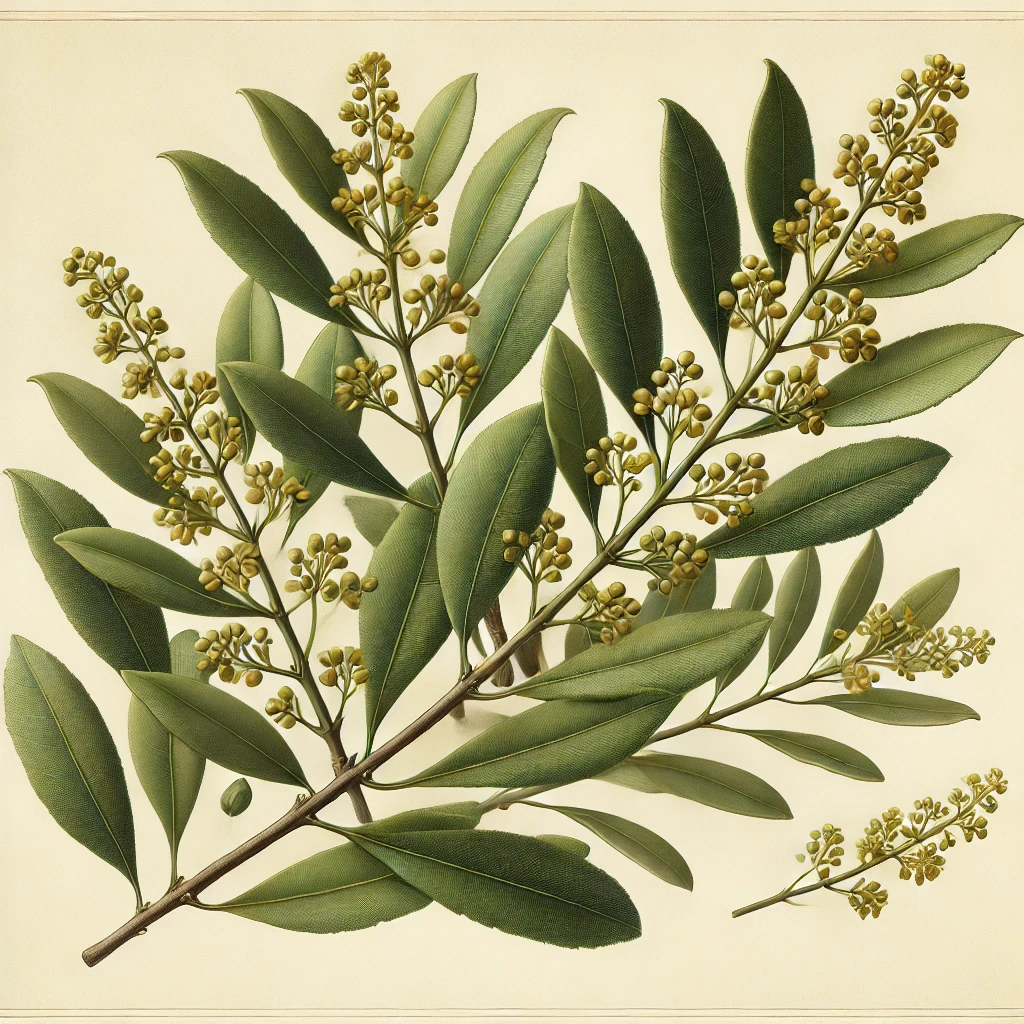Bayleaf, Laurel (Laurus nobilis): A Medicinal and Culinary Herb with Diverse Applications

Overview
Bayleaf (Laurus nobilis), also known as Laurel, is a popular culinary herb that doubles as a medicinal plant. Known for its aromatic leaves, bayleaf is commonly used in cooking, but it also offers health benefits in traditional medicine. With anti-inflammatory, antimicrobial, and digestive properties, bayleaf is used to relieve digestive discomfort, treat infections, and manage pain. However, it should be used with caution, as its essential oils can cause irritation in some people.
Medicinal Activity
Bayleaf provides numerous therapeutic effects, including:
Antibacterial and Antiseptic: Helps prevent infections, useful for skin and wound care.
Antipyretic: Reduces fever and assists in managing colds and flu.
Antirheumatic: Reduces pain and inflammation associated with arthritis and rheumatism.
Carminative and Digestive Aid: Eases gas, bloating, and indigestion.
Sedative and Nervine: Helps in relieving anxiety, nervousness, and insomnia.
Insect Repellent: Acts as an insect deterrent and may relieve bug bites.
Antibacterial and Antiseptic: Helps prevent infections, useful for skin and wound care.
Antipyretic: Reduces fever and assists in managing colds and flu.
Antirheumatic: Reduces pain and inflammation associated with arthritis and rheumatism.
Carminative and Digestive Aid: Eases gas, bloating, and indigestion.
Sedative and Nervine: Helps in relieving anxiety, nervousness, and insomnia.
Insect Repellent: Acts as an insect deterrent and may relieve bug bites.
Therapeutic Indication
Bayleaf is traditionally used to address a variety of health conditions, including:
Digestive Health: Used to manage dyspepsia, colic, and gas, and support appetite.
Respiratory Relief: Helps relieve cough, colds, and congestion, often used in steam inhalation.
Joint and Muscle Pain: Useful for rheumatic conditions, muscle pain, and sprains.
Infections and Wounds: Applied to minor wounds and insect bites due to its antiseptic properties.
Stress and Insomnia: Provides mild sedative effects, making it beneficial for stress relief and better sleep.
Digestive Health: Used to manage dyspepsia, colic, and gas, and support appetite.
Respiratory Relief: Helps relieve cough, colds, and congestion, often used in steam inhalation.
Joint and Muscle Pain: Useful for rheumatic conditions, muscle pain, and sprains.
Infections and Wounds: Applied to minor wounds and insect bites due to its antiseptic properties.
Stress and Insomnia: Provides mild sedative effects, making it beneficial for stress relief and better sleep.
Prepration & Usage
Bayleaf can be used in various forms depending on the intended purpose:
Tea or Infusion:
Dosage: 1–2 teaspoons of crushed leaves per cup of hot water, consumed up to three times daily for digestive and respiratory support.
Essential Oil:
Dosage: 1–2 drops of bayleaf essential oil diluted in a carrier oil or added to a beverage (e.g., honey or tea), used cautiously due to potency.
Topical Application:
Preparation: Essential oil diluted in a carrier oil can be applied for muscle pain or bug bites. A poultice can also be made from crushed fresh leaves for localized use on bruises or sprains.
Tea or Infusion:
Dosage: 1–2 teaspoons of crushed leaves per cup of hot water, consumed up to three times daily for digestive and respiratory support.
Essential Oil:
Dosage: 1–2 drops of bayleaf essential oil diluted in a carrier oil or added to a beverage (e.g., honey or tea), used cautiously due to potency.
Topical Application:
Preparation: Essential oil diluted in a carrier oil can be applied for muscle pain or bug bites. A poultice can also be made from crushed fresh leaves for localized use on bruises or sprains.
Safety & Considerations
While bayleaf is beneficial, some safety considerations are essential:
Potential for Skin Irritation: Essential oils can cause skin irritation and allergic reactions in sensitive individuals.
Essential Oil Caution: Avoid high doses of essential oil as it may cause nausea, vomiting, and diarrhea.
Intestinal Perforation Risk: Bay leaves should be removed from food before consumption, as they are tough and can cause injury if ingested whole.
Potential for Skin Irritation: Essential oils can cause skin irritation and allergic reactions in sensitive individuals.
Essential Oil Caution: Avoid high doses of essential oil as it may cause nausea, vomiting, and diarrhea.
Intestinal Perforation Risk: Bay leaves should be removed from food before consumption, as they are tough and can cause injury if ingested whole.
Conclusion
Bayleaf is a versatile herb with numerous applications in both cooking and traditional medicine. Its antibacterial, anti-inflammatory, and digestive properties make it a valuable natural remedy for common ailments. While safe when used correctly, bayleaf essential oil and whole leaves require careful handling to prevent adverse effects. Bayleaf remains a staple for promoting health and well-being, particularly for digestion, respiratory health, and pain management.
